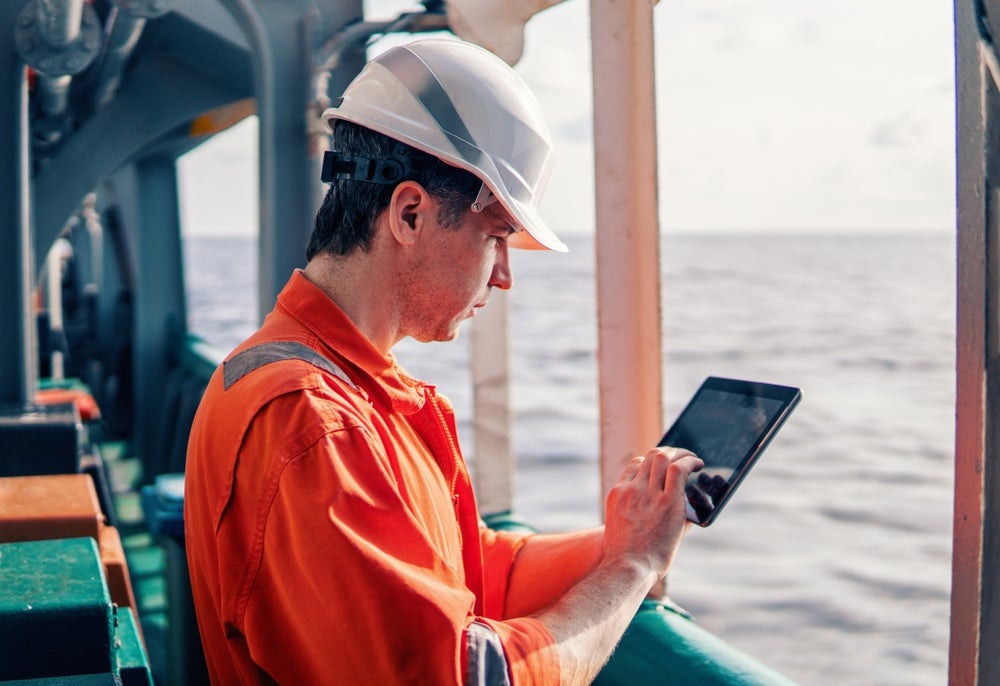Feature
How the eBL is shaping the future of shipping
Omer Guy, general counsel at DCSA, explores the opportunities and challenges when it comes to implementing the electronic Bill of Lading.

For centuries, the maritime industry has relied on paper documentation to track and process shipments. Given the expanse of global supply chains, this means that thousands of pieces of paper change hands every day – a time-consuming, costly, and resource-intensive process that is prone to fraud.

Omer Guy, DCSA general counsel
In order to increase efficiency, a number of initiatives aimed at accelerating digitalisation within the sector have been introduced over recent years.
Notably, in 2023, the Future of International Trade (FIT) Alliance – founded by DCSA, BIMCO, FIATA, ICC, and SWIFT – launched the Declaration of the electronic Bill of Lading (eBL).
Meanwhile, DCSA’s nine-member carriers have signed a commitment to 100% eBL by 2030.
To date, progress has been strong, with a growing number of stakeholders coming forward to pledge their support to move from paper to eBL. Yet with global trade expected to triple by 2050, the shipping sector will need to adapt at a faster rate to keep up with growth – and a number of hurdles must still be overcome.
EBLs: efficiency, security, and transparency
As trade volumes continue to increase, ensuring the supply chain continues to operate efficiently will become increasingly significant. By reducing the amount of time spent manually verifying documents, streamlining processing and transfer times and reducing the amount of paper in circulation, switching away from paper-based bills of lading will expedite the movement of goods, reduce waiting times, and greatly lower risks and costs.
Indeed, according to a 2022 study by McKinsey and Company, a universally adopted eBL could save stakeholders around $6.5bn in direct costs and enable $30bn-$40bn in new global trade volumes.
Beyond monetary gains, eliminating the use of paper is an important step in the journey to net-zero. An estimated four billion pieces of paper are generated by the international trade industry annually, and switching to the eBL could save around 28,000 trees per year. In addition to significantly reducing the shipping sector’s emissions, this would also contribute to national decarbonisation targets.
In addition, an eBL offers a valuable opportunity for data analysis. There is an abundance of useful information that can be collected along the supply chain and leveraged when interacting with third parties such as banks or insurance companies.
Information can be digitally processed to improve operations, assess business risk and ascertain pricing – reducing the time that would otherwise be spent sifting through documents manually and increasing transparency with little to no collection of highly relevant data.
Importantly, transitioning to an eBL can significantly enhance security. While cyber risk is often cited as a concern when it comes to digitalisation, paper documentation is far more susceptible to risk given it can easily be doctored or falsified. In addition, such issues are only flagged after the fraud has been noticed, leading to drawn-out litigation processes that are restricted to the company concerned.
With digital processing, on the other hand, issues are flagged faster and learnings can shared with stakeholders across the connected ecosystem, enabling safeguards to be established on a wider scale.
Barriers to adoption discourage uptake
While an eBL offers significant opportunities, there are several challenges that must be overcome to expedite adoption across the industry.
As outlined in DCSA’s recent report on the barriers to eBL adoption, legal and regulatory barriers are considered significant challenges when it comes to uptake. In certain jurisdictions, the eBL is not legally recognised as a document of title. In others, the conditions governing its use are overly prescriptive or too ambiguous.
Meanwhile, from a regulatory perspective, even where electronic documents are legally permitted, government bodies such as customs may still withhold the right to request the presentation of a paper Bill of Lading.
Interoperability also constitutes a significant obstacle. There is currently a wide range of eBL solution providers that work in digital silos. This means that in a specific transaction, all parties must be onboarded onto the same platform. Given the vast quantity of stakeholders interacting along the supply chain and the range of technology available, this ultimately creates another barrier to use.
On a practical level, uncertainty surrounding the use of the eBL continues to impact uptake. The physical Bill of Lading has a long history and, in contrast, learnings from the eBL remain limited. Given the complexity and quantity of sensitive information that may be transferred, stakeholders are often reluctant to take the first step.
The future is bright
There is work to be done if the shipping industry is to achieve widespread adoption of a digital Bill of Lading. Yet change is already moving in the right direction, with governments and industry stakeholders making a concerted effort to adapt.
The UK, for instance, passed the Electronic Trade Documents Act in 2023 and the UN Model Law on Electronic Transferable Records remains a significant driver of global digitalisation. In addition, DCSA is collaborating with solution providers to develop the technical and legal standards that will enable stakeholders to transfer data across platforms and give businesses the confidence to move forward with adoption.
As a result, there has been a considerable increase in momentum over recent years: eBL adoption has tripled from 1.2% in 2021 to 3.7% in 2024. This exponential growth is expected to continue as industry bodies, solutions providers, governments and stakeholders continue to work together to encourage adoption and overcome challenges.